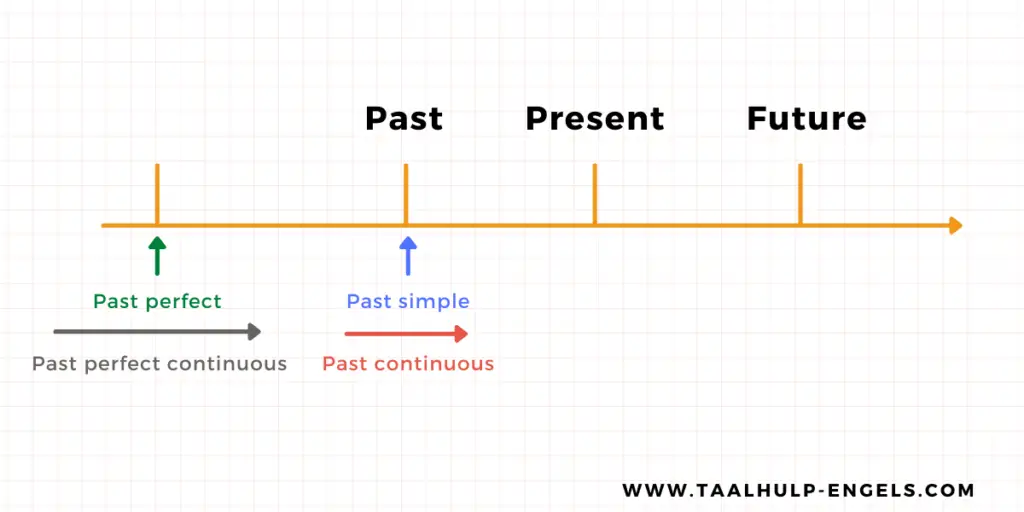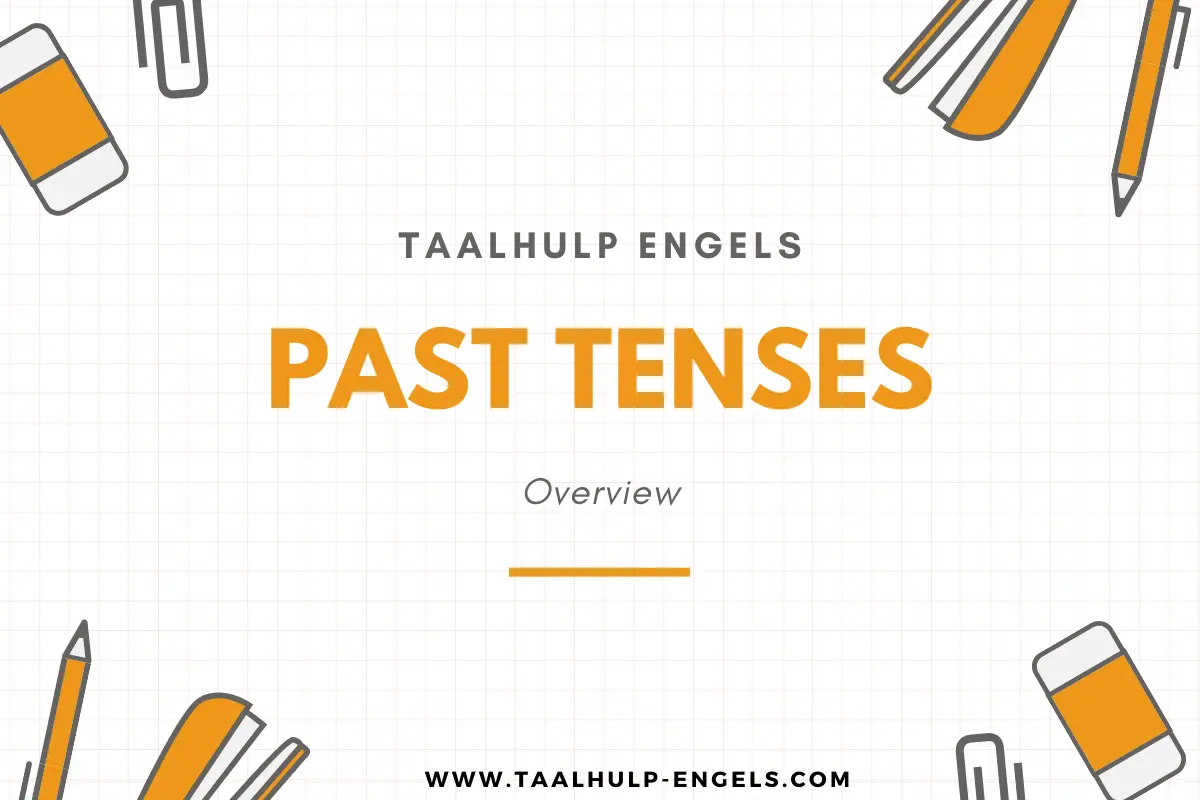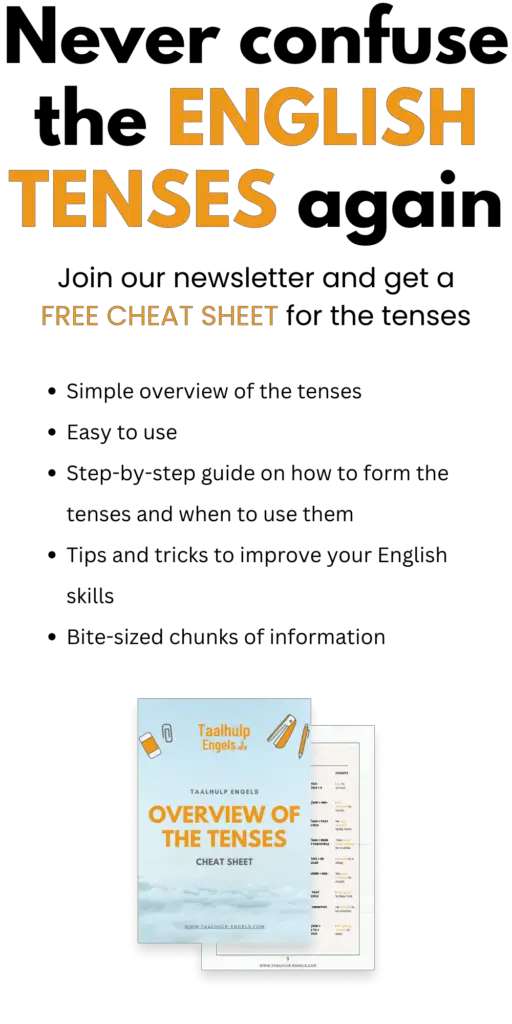In English, there are tenses to talk about the present, the past, and the future. It can be tricky to know which tense to use in a particular situation. You have a complete overview of the past tenses in English on this page.
When one refers to the past tenses, they are talking about one of the following:

Past tenses overview

The overview above shows a visual representation of the differences between the past tenses.
- Past simple: short, simple actions and habits in the past.
- Past continuous: long actions in the past or actions that were going on.
- Past perfect (simple): actions that happened before another action in the past
- Past perfect continuous: actions before other actions in the past when the focus is on the duration.
You have a schematic overview below where you can compare the different past tenses.


Exercises
- Past Simple or Past Continuous Exercise 1
- Past Simple or Past Continuous Exercise 2
- Past Simple or Past Continuous Exercise 3
- Past Simple or Past Continuous Exercise 4
- Past Simple or Past Continuous Exercise 5
- Past Simple or Past Perfect Exercise 1
- Past Simple or Past Perfect Exercise 2
- Past Simple or Past Perfect Exercise 3
- Past Simple or Past Perfect Exercise 4
- Past Simple or Past Perfect Exercise 5


